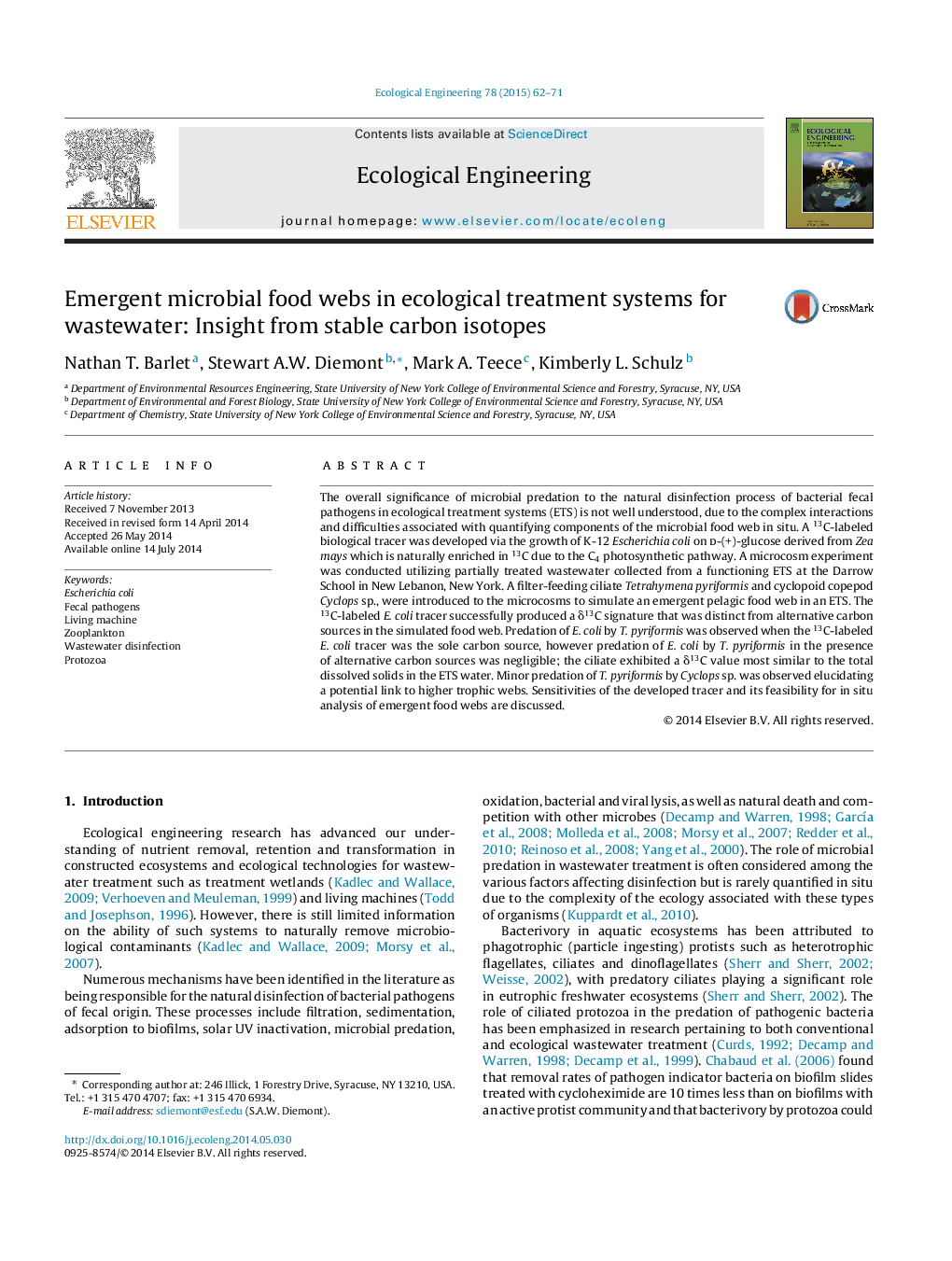| کد مقاله | کد نشریه | سال انتشار | مقاله انگلیسی | نسخه تمام متن |
|---|---|---|---|---|
| 4389231 | 1618021 | 2015 | 10 صفحه PDF | دانلود رایگان |
• Development of a 13C-labeled E. coli tracer using Zea mays derived glucose.
• Simulated an ecological treatment system food web with microcosm study.
• The ciliate T. pyriformis exhibited preference for DOC over phagotrophy.
• Predation of ciliate by Cyclops sp. suggests links to higher trophic levels.
The overall significance of microbial predation to the natural disinfection process of bacterial fecal pathogens in ecological treatment systems (ETS) is not well understood, due to the complex interactions and difficulties associated with quantifying components of the microbial food web in situ. A 13C-labeled biological tracer was developed via the growth of K-12 Escherichia coli on d-(+)-glucose derived from Zea mays which is naturally enriched in 13C due to the C4 photosynthetic pathway. A microcosm experiment was conducted utilizing partially treated wastewater collected from a functioning ETS at the Darrow School in New Lebanon, New York. A filter-feeding ciliate Tetrahymena pyriformis and cyclopoid copepod Cyclops sp., were introduced to the microcosms to simulate an emergent pelagic food web in an ETS. The 13C-labeled E. coli tracer successfully produced a δ13C signature that was distinct from alternative carbon sources in the simulated food web. Predation of E. coli by T. pyriformis was observed when the 13C-labeled E. coli tracer was the sole carbon source, however predation of E. coli by T. pyriformis in the presence of alternative carbon sources was negligible; the ciliate exhibited a δ13C value most similar to the total dissolved solids in the ETS water. Minor predation of T. pyriformis by Cyclops sp. was observed elucidating a potential link to higher trophic webs. Sensitivities of the developed tracer and its feasibility for in situ analysis of emergent food webs are discussed.
Journal: Ecological Engineering - Volume 78, May 2015, Pages 62–71
